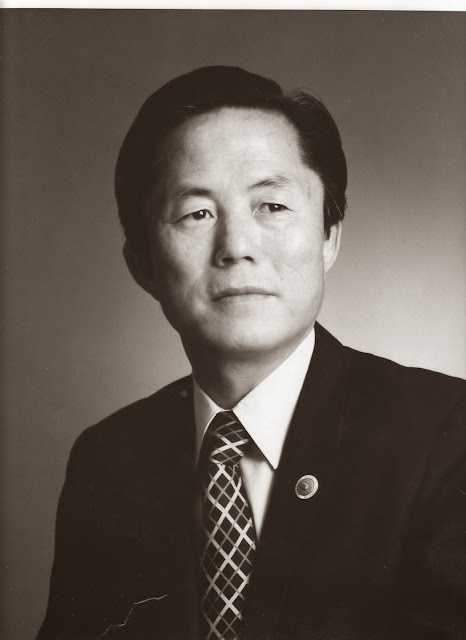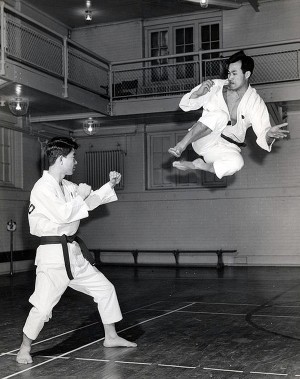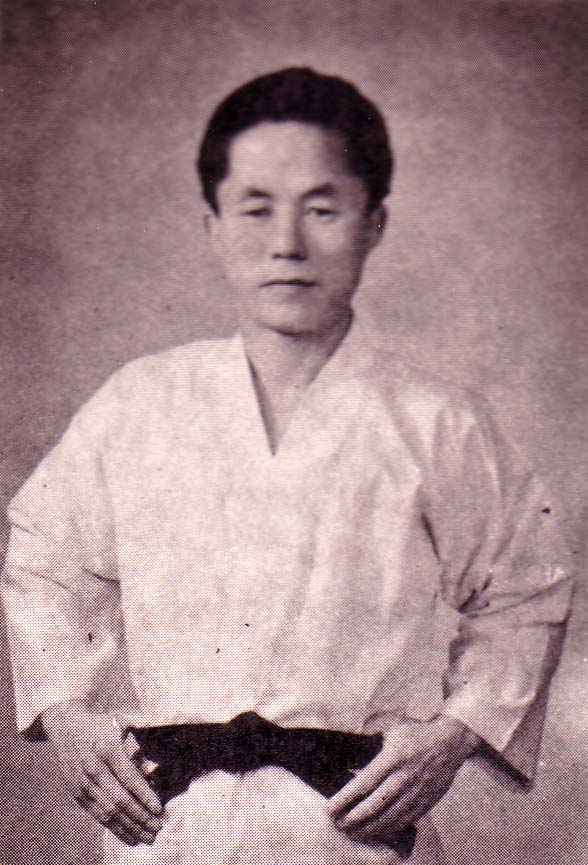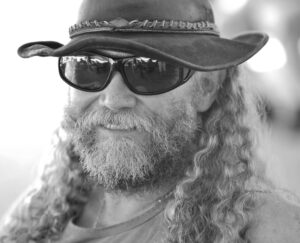History of Taekwondo

Welcome to the History of Taekwondo. I am presenting here the "accepted" history. Personally I disagree with this history. I believe it is based more on good marketing then historical facts. Much of what is presented is speculation not based on fact.
Taekwondo can be defined as a bare-hand combat discipline that involves the use of the whole body. It is the unarmed combat technique for self-defense. And which entails skillfully applied techniques that include punching, blocks, parrying actions.
Done with hands and feet, dodges, jumping kicks, etc. Most importantly the meaning of Tae is “to kick” or “Smash with feet”, Kwon is “punching”, while Do means “ method” or “way”.
History of Taekwondo
However, Taekwondo does not just represent physical training. But also the development of one’s spirit that carries over into all aspects of life. It is regarded as a way of thinking and a pattern of life that involves strict discipline. This is maybe true in Korea, but no so much so in the Western Cultures.
Taekwondo in the west today is a sport primarily. Not all TKD schools however follow that path.
Although many historians teach that Taekwondo originated thousands of years ago in ancient Korean. It has been established that Taekwondo is a collection of somewhat similar unarmed martial arts techniques. And starting points formed by Korean Grand Masters, including General Choi Hing Hi. Who upon returning to Korea from Japan following World War II founded the art.
During their time in Japan, the Grand Masters learned Karate-Do. And they learned techniques, these set a foundation for a new martial art. Which was in 1955 officially named for the newly unified and recognized Korean martial art called Taekwondo.
History of Taekwondo - Origins of Martial Arts
The origins of the Chinese martial arts are ascribed to a Monk from India called Bodhidharma. Based on old Chan Buddhist texts, Bodhidharma arrived in China in the 6th century ACE to found a monastery at Shaolin-So. Then he started to teach breath control and meditation.
Since his followers had difficulties practicing that challenging technique, he decided to teach them ways of strengthening their bodies and spirit. Apparently, this method was later combined with Taoism and I-Ching. And set a foundation for the Chinese martial arts of Kung-Fu, Tai Chi Chuan, and Kosho Shorei Ryu Kempo.
The first evidence [questionable] of Taekwondo in Korea dates back to the Three Kingdoms Period. Which is a mural drawn on the wall of the Myung-Chong tomb in Tunsko. The tomb was built in the Goguryeo Kingdom in the 1st century. This mural depicts two young men sparring. In reference to the History of Taekwondo this is very questionable. Sparring has existed for thousands of years.
And this is seen in Egypt as well. So does that mean Egypt was also creators of martial art we know today? Certainly not. This is therefore unqualified speculation. Propaganda really in my opinion.
In some other tombs from this period, some similar murals were discovered in which we can see people practicing martial arts. According to these findings, we can say for sure that Korea was developing its form of martial art before Bodhidharma set his foot in China. Does this mean Taekwondo is of Korean origin? Yes and no. Taekwondo is heavily based on Japanese Shotokan Karate. I would say however these images are far more likely this is the linage of Taekkyeon. Perhaps some other long extinct martial art also.
History of Taekwondo - General Hong Hi Choi
History of Taekwondo: In 1954, General Hong Hi Choi organized the 29th Infantry on Che Ju Island. Which is off the Korean Coast. Done as a spearhead and center for TaekKyon training in the military.
On April 11, 1955 at a conference of Kwan masters, historians, and TaekKyon promoters met. Most of the kwan masters who decided to merge their various styles for mutual benefit of all schools. The name "Tae Soo Do" was accepted by a majority of the Kwan masters. Two years later the name was changed again, this time to "Taekwondo." [Note Tae Soo Do, not to be confused with Tang Soo Do.]
The name was suggested by General Hong Hi Choi (who is considered the father of Taekwondo). "Taekwondo" was suggested by Choi because of its resemblance to Taekkyon. And so provides continuity and maintains tradition. Further, it describes both hand and foot techniques.
Dissension among the various Kwans that did not unify carried on until September 14, 1961. Then by official decree of the new military government things changed. The kwans were ordered to unify into one organization called the Korea Taekwondo Association (KTA), with General Hong Hi Choi elected as its first president.
Now let's continue with the History of Taekwondo.
History of Taekwondo - Organizations

The History of Taekwondo: In 1962, the KTA re-examined all the black belt ranks to determine national standards. And also in 1962, Taekwondo became one of the official events in the annual National Athletic Meet in Korea. The KTA sent instructors and demonstrations teams all over the world.
Jhoon Rhee (who is considered the father of American Taekwondo) attended San Marcos Southwest Texas State College. And later taught a Taekwondo course at the college and formed a public Taekwondo club.
History of Taekwondo
A Taekwondo demonstration at the United Nations headquarters in New York City in 1963, caused the formation of the U.S. Taekwondo Association in 1967. Which later was superseded in 1974 by the U.S. Taekwondo Federation.
In Korea, the study of Taekwondo spread rapidly from the army into high schools and colleges.
More of the History of Taekwondo now.
Also in March of 1966 Choi founded the International Taekwondo Federation (ITF). And he also served as president. Choi later resigned as the KTA president and moved his ITF headquarters to Montreal.
It was from where he concentrated on organizing Taekwondo internationally. His emphasis is on self-defense methodology, not particularly on the sport. By 1974, Choi reported that some 600 qualified ITF instructors were distributed throughout the world.
Young-wun Kim was elected the new KTA president. Feeling that Korea was the mother country of Taekwondo and that the world headquarters should be located there, he dissolved the ITF's connection with the KTA. And on May 28, 1973 created a new international governing body called the World Taekwondo Federation (WTF). Which coincided with the first World Taekwondo Championships that were held in Seoul, Korea. At the first inaugural meeting, Un Yong Kim was elected as president of the WTF and drafted a charter for the federation. The WTF is the only official organization recognized by the Korean government as an international regulating body for Taekwondo.
History of Taekwondo - The WTF
The World Taekwondo Federation has since made a major effort to standardize tournament rules and organize world class competitions. After the 2nd World TKD Championship in Seoul, the WTF became an affiliate of the General Assembly of International Sports Federation (GAISF). Of which has ties to the International Olympic Committee (IOC). The IOC recognized and admitted the WTF in July 1980. In 1982 the General Session of the IOC designated Taekwondo as an official Demonstration Sport for the 1988 Olympic Games in Seoul, Korea.
Since Modern-day Taekwondo's official birth on April 11, 1955, its development as a sport has been rapid. Over 30 million people practice Taekwondo in more than 156 countries.
History of Taekwondo - Life of General Choi

History of Taekwondo: Choi was born on 9 November 1918 in Hwa Dae, Myŏngch'ŏn county, in what is now North Korea. At which time was then under Japanese rule. At the time, the place was named Meigawa-gun (Myongchon-kun), Kankyo-hokudo (Hamgyong-Pukto), Chosen, as part of the Empire of Japan.
And Choi originally claimed that his father sent him to study calligraphy under Han Il Dong. The man who was also "a master of Taekkyeon, the ancient Korean art of foot fighting" (Park, 1993, p. 241). He later recanted this story and said that he never studied Taekkyeon and that it had nothing to contribute to Taekwondo.
General Choi traveled to Japan, where he studied English, mathematics, and karate. In Kyoto, he met a fellow Korean with the surname Kim, who was a karate instructor and taught Choi this martial art. Choi also learned Shotokan karate under Funakoshi Gichin.
Just before he had left Korea, Choi apparently had a disagreement with a wrestler named Hu. And the possibility of a future confrontation inspired him to train; in his own words, "I would imagine that these were the techniques I would use to defend myself against the wrestler. Mr. Hu, if he did attempt to carry out his promise to tear me limb from limb when I eventually returned to Korea" (Park, 1993, p. 242). Choi attained the rank of 1st Dan in karate in 1939, and then 2nd Dan soon after.
History of Taekwondo - Military career
Choi was forced to serve in the Japanese army during World War II, but was implicated in a rebellion and imprisoned. During which time he continued practicing martial arts. Following the war, in January 1946, Choi was commissioned as a second lieutenant in the Korean army. From 1946 to 1951, Choi received promotions to first lieutenant, captain, major, lieutenant colonel, colonel, and then brigadier general. Choi was promoted to major general in 1954.
History of Taekwondo
Choi combined elements of Taekkyon and Oh Do Kwan Karate to develop a style of the martial art known as "Taekwondo". This organization spelled Taekwon-Do, (태권도; 跆拳道), which means "foot, fist, art" or "the way of hand and foot." And it was so named on 11 April 1955.
Choi founded the Oh Do Kwan, and held an honorary 4th Dan ranking in the Chung Do Kwan. Due to accusations of dishonesty, Choi was stripped of his rank and position in the Chung Do Kwan. During the 1960s, Choi and Nam Tae-hi led the original masters of Taekwondo in promoting their martial art around the world, though these would be only the first of many such endeavors.
ITF Taekwondo organizations credit Choi with starting the spread of Taekwondo internationally by stationing Korean Taekwondo instructors around the world. Ontario Canada was one such place. And they have consistently claimed that ITF-style Taekwondo is the only authentic style of Taekwondo, most notably in early sections of its textbooks.
History of Taekwondo
He was also the author of the first English Taekwondo syllabus book, Taekwon-Do, published by Daeha Publication Company in 1965. In 1972, Choi went into exile in Canada after the South Korean government objected to his introduction of the sport into North Korea. And the South Korea government formed the World Taekwondo Federation (WTF) in 1973 (renamed to WT in 2018). In 1979 he traveled to North Korea where he was welcomed by the government and supported in his project of spreading Taekwondo to the world. He was remembered as the founder and champion of Taekwondo.
Much like the History of Hapkido there is a lot of propaganda in the history of Taekwondo. Love it or hate it TKD has revolutionized the world. My personal issues with all this? We do not need any government involvements in the martial arts. It always ends the same. Propaganda as history.
Thank you for reading our History of Taekwondo. I hope you found this to be of value!
The History of Taekwondo was researched by: Sensei Kara Borshuk
Edited by Grand Master Art Mason
Thank you for your time and have a wonderful day! Keep Learning!
Vă mulțumesc pentru timpul acordat și o zi minunată! Continua sa inveti!
Al vostru în arte,
Mare Maestru Art Mason
